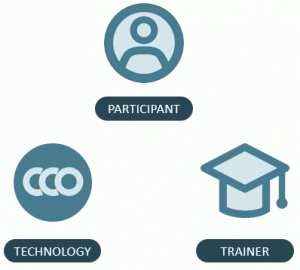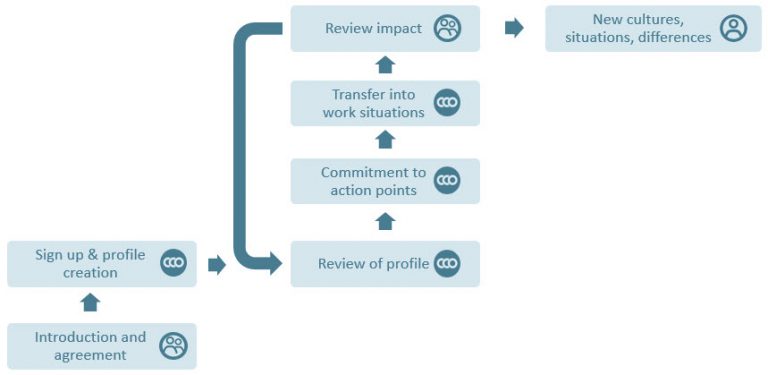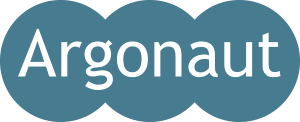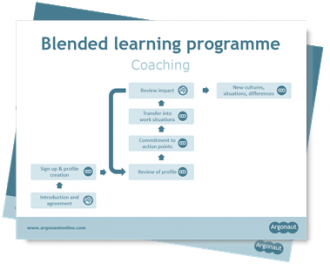Blended learning: getting the technology mix right in intercultural training and coaching
Oct 6, 2016 · by Richard Farkas
Blending is more than just mixing
Next time you finish a training course with a drink at the conference centre bar, try to find the drink to match the experience you just had. Will it be a half-litre glass of heavy, dark Guinness that seems to steal your energy and your ability to move? Or super sweet liqueur with a magic ingredient that seems to promise instant social success? Or an alcohol-free beer that looks like the real thing but produces an empty feeling of disappointment? Or will you choose as your end-of-training drink a series of shots that leave you with a headache and no memory of the previous few hours?

To symbolise and celebrate the training you just had, I would like to think you’ll choose a blended whisky (or delicious cocktail, if you’re not a drinker). It should have just the right amount of different ingredients to produce the perfect flavour and still beat the luxury drink brands on price.
Your training should work in a similar way as the perfect blended drink. Blended learning is not just about mixing training methods: face-to-face, online, classroom. We need to be more ambitious than that. Let’s make blended learning mean getting the mix right.
Principles for successful blended learning
In the Argonaut team we see a huge number of different training designs, adjusted for different participant groups, different budgets, different business goals and many more variables. There are a few common success factors I would like to share with you.
- face-to-face time is precious, so use it for inspiration, connection and other interactions that are hard to achieve online
- online self-study is great for some aspects of learning and change, not so great for others
- learners are different: learning preferences vary individually and (no surprise) culturally
- trainers are different: training and coaching styles are diverse
- good programme structure boosts return on investment
- trainers should know the technology, while learners should not need in-depth knowledge of tech and tools
- technology makes some new things possible
Good program structure not only puts the different phases of learning into the right order, it also ensures that the opportunities from technology-enabled learning are built into the plan, avoiding the under-use of available technology and the over-use of trainers’ time for routine or mechanical tasks during the process.
I’ll return to these principles in a later blog post soon, but today let’s get practical.
Two examples of blended learning
I want to share with you two contrasting ways of doing blended learning successfully for intercultural training and coaching.
These are not fixed designs which must be followed strictly in all relevant cases. These are simplified processes built on the key steps. You can compare or apply these approaches to your own training and coaching scenarios.
The process diagrams are available for download in Powerpoint format, so you can customise for your own situation and brand identity.
Single F2F event intercultural training
A very common scenario is when the trainer meets the participant or group just once during the process. In traditional training without an online element, the trainer has one shot to make an impact, perhaps with just a few hours of contact time. Extending the process by email in advance or follow-up discussion is costly in terms of the trainer’s time, with questionable value.
The solution is to use custom technology to extend the process and deepen the impact in a smart way.

This example shows how we can engage the learner ![]() early through the signup and profile-creation stage. We are already answering participant’s questions about the scope, goals and content of the coming training.
early through the signup and profile-creation stage. We are already answering participant’s questions about the scope, goals and content of the coming training.
This is also a chance for the trainer to efficiently introduce him/herself through the invitation, welcome notes and instructions.
Optional self-study gives self-motivated participants a chance to get online and start researching, preparing thoughts, questions and ideas for the training. They become aware that there are rich resources of information available online and that it is not necessary to wait for the trainer to answer basic practical questions about cultural difference.
Needs analysis and customisation is the first time the trainer needs to commit real resources of time to understand the specific group and their needs. We assume that the trainer already knows or has researched the organisation, business goals, industry and other contextual factors. In blended learning, the online platform makes it efficient for the trainer to get familiar with the group overall and each individual in the group even before they meet.
Live session with the trainer is the key moment in the whole process. This is an opportunity for intensely powerful experiences which drive real change in future behaviour. The trainer may choose to project insights from a laptop generated by the online learning platform to kick-off discussion and to help the group members position themselves among cultures, colleagues, customers and other contacts. But a bold trainer can keep the Powerpoint and browsers closed for much of the session. It’s an ideal chance to simulate or confront participants with real (classroom) situations of cultural difference using interaction, movement, discussion, physical closeness and group exercises.
Before the participants leave the room, the trainer can take a moment to check that the participants know enough about the online tool to continue their learning online.
Continuous learning following the face-to-face event may be sliced in different ways, but tends to include a review/reminder of action points, encouragement to research information and to explore new situations and cultures not covered so far. Keeping the participants engaged in intercultural topics (through alerts, additional advice, new social comparisons, hints and links) helps to reinforce transfer of learning to real work situations.
Intercultural coaching
Another scenario we run into a lot in the Argonaut team is one-to-one intercultural coaching. Like with intercultural training, there are as many real-world variations of coaching programme structure. Coaching is less standardised. Of course, that’s partly the point of coaching.

A coach who uses an online profiling tool in advance can be very focused on specific cultural issues already in the first session, if needed. The client also gets potential action points from the cultural profile early so is able to quickly take ownership of practical changes in working style.
When the number of coaching sessions is limited, online tools can accelerate the speed at which the client is ready to transfer new ideas into work situations. Between coaching sessions, the online tool provides reminders and contextual information for action points which the client committed to.
From here on, the process may repeat, applying the ideas generated during the coaching to new situations and new cultural differences with each cycle. The coach and client may focus their time together on reviewing impact, confronting resistance to change and renewing commitments or agreeing new action points. The coach does not need to provide “information desk” or “country expert” services so much. The coach can instead build the relationship, inspire, support through emotional and practical challenges and celebrate success as real change happens.
Planned moments of inspiration and change in intercultural training
In both these examples, blended learning creates space in a typically high-pressure schedule for trainers to do what they do best: to drive participants to moments of insight, connection, inspiration and change. The genius of many intercultural trainers and coaches is their ability to adapt to different learning styles and, yes, cultures, using a toolbox of training and mentoring techniques. Some of that genius adaptation happens in spontaneous, dynamic way in live situations. Some of the genius adaptation is built into the plan.
Download and adapt your blended learning programme structure today.
Technology-enabled intercultural training: blended learning programme structures
Oct 5, 2016 · by Richard Farkas
Download these intercultural training and intercultural coaching programme structures in PPTX format.

